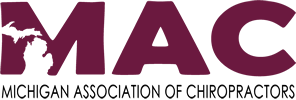Complete Story
02/05/2016
Special Report: Michigan’s Prescription Drug Abuse Epidemic
Number of Drug Overdose Deaths has Tripled Since 1999; Michigan ranks 10th Nationally in Per Capita Prescription Rates of Opioid Pain Relievers
Prescription drug abuse has reached epidemic proportions in Michigan. The number of drug overdose deaths – the majority of which are caused by prescription drugs – has tripled since 1999. The rise in the use of heroin – once on the decline – is skyrocketing, as prescription painkiller addicts turn to the dangerous, less expensive street drug.
In his 2015 State of the State Address, Michigan Governor Rick Snyder called for a comprehensive plan to address prescription drug and opioid abuse. In mid-June, he created the Michigan Prescription Drug & Opioid Abuse Task Force, a bipartisan body chaired by Lt. Governor Brian Calley and composed of state lawmakers, government officials, court officials, law enforcement personnel, medical professionals, and other stakeholders. The Task Force was created to “examine the recent trends, evaluate strategic options, and develop a statewide action plan,” and they released their report, containing two dozen recommendations, late last year.
“The impact of prescription drug and opioid abuse is being felt in every community across Michigan,” Governor Snyder said. “It crosses all demographic, geographic and political lines. This problem is something we must work together to address as soon as possible.”
Michigan’s Problem with Prescription Drugs
According to data from the Michigan Automated Prescription System (MAPS), more than 21 million prescriptions for controlled substances were written in 2014, up roughly 4 million prescriptions from 2007, despite the fact that Michigan’s population actually declined over that period. More than half of those 21 million prescriptions were for schedule II drugs, which have a high potential for abuse and dependence. Data shows that the number of schedule II prescriptions has nearly quadrupled in Michigan in the past seven years. Since the creation of MAPS, the powerful opioid pain medication hydrocodone has been the most prescribed drug, accounting for more than 32 percent of all prescriptions in 2012.
MAPS also tracks dosage units, or pill counts, of controlled substances. In 2007, prescribers wrote nearly 180 million individual dosage units of schedule II drugs. In 2014, this number skyrocketed to 745 million, a quadrupling of pill counts in just seven years.
Overdose Deaths and Emergency Room Visits. According to a 2014 report from the Michigan Department of Community Health, Michigan has experienced a four-fold increase in unintentional fatal drug poisonings since 1999. The plurality of these deaths, nearly 20 percent, were definitively opioid-related, and the number could be much higher.
Emergency Room Visits. Michigan hospitalizations involving opioids more than doubled from 2000 to 2011.
Michigan’s Rank. According to a study published in the Morbidity and Mortality Weekly Report in 2014, Michigan ranked 10th among all states in per capita prescribing rates of opioid pain relievers in 2012, when providers wrote 107 prescriptions for opioid drugs and benzodiazepines for every 100 Michiganders. According to data compiled by Trust for America’s Health for the years 2011-2013, Michigan ranked 18th in the nation based upon number of all overdose deaths.
Heroin Use on the Rise. According to a 2014 CDC study, among heroin users who began their use after 2000, more than 75% reported that a prescription drug was the first opioid they had abused. According to the Task Force, Michigan is experiencing a heroin crisis that must be addressed in coordination with the response to prescription drug abuse. The Michigan Department of Community Health documented 826 heroin-related deaths between 2009 and 2012. During this time period, the heroin-related overdose death rate doubled.
Task Force Recommendations
The Task Force’s full report makes 25 primary recommendations regarding prevention, treatment, regulation, policy and outcomes, and enforcement. These recommendations include:
- Increasing licensing sanctions against health professionals who violate proper prescribing and dispensing practices
- Requiring additional training for professionals who prescribe controlled substances
- Reviewing programs to eliminate doctor and pharmacy shopping and requiring a bona-fide doctor-patient relationship for prescribing controlled substances
Conservative, Non-Drug Chiropractic Can Help!
Unfortunately, none of these recommendations include the non-drug, conservative care approach taken by doctors of chiropractic. Chiropractic care and other non-drug, conservative approaches to pain management can be a major part of the solution to the opioid and other prescription painkiller crisis rocking Michigan and the nation as a whole. According to the ACA, a conservative health care model emphasizes more cost-effective and safer approaches over potentially addictive medications or surgery for pain management and health enhancement. As experts in the treatment of neuromusculoskeletal disorders, chiropractors can eliminate or greatly reduce the need for surgery and prescription medications for pain relief.
In October 2015, the theme of the ACA’s yearly National Chiropractic Health Month was #PainFreeNation. This public awareness campaign was designed to bring attention to the public health crisis caused by pain, and in particular the overuse of prescription painkillers. The campaign is part of an overall strategy to educate the public about the value of exhausting conservative forms of care for both acute and chronic pain before resorting to more invasive, higher risk options, such as opioids. It is critical that patients in pain be informed of all management strategies, especially non-drug interventions such as chiropractic, to reduce the risk of overuse and addiction.
Organizations Taking Notice!
Health care organizations have begun to take notice of the benefits of chiropractic and other forms of conservative care when it comes to treating patients in pain. One very prominent recent example is the Oregon Health Plan (OHP), the State of Oregon’s Medicaid program.
Patients who experience back pain and are enrolled in OHP are steered toward chiropractic and other conservative complementary therapies and away from prescription medications and surgery, a huge shift from previous policy, which prioritized painkillers as the first line of defense against back pain. The State based its decision on “new evidence, including a bio-psycho-social model designed to help people with back problems resume normal activities. This model will help people manage their pain with less reliance on medication and fewer costly surgeries.”
Additionally, earlier this year the Joint Commission, which certifies more than 20,000 health care organizations and programs in the United States, including every major hospital, revised its pain management standard to include chiropractic services and acupuncture. Clinical experts in pain management who provide input to the commission's standards affirmed that treatment strategies may consider both pharmacologic and nonpharmacologic approaches.


